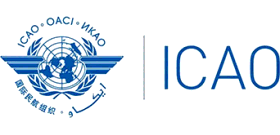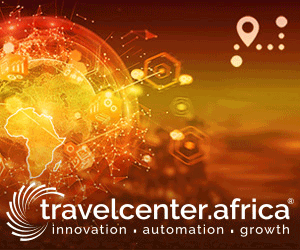 Luanda Conference Sparks New Momentum for Africa’s Aviation and Tourism Integration
Luanda Conference Sparks New Momentum for Africa’s Aviation and Tourism Integration
Luanda recently emerged as more than just a host city for the 2nd UN Tourism & ICAO Ministerial Conference on Tourism and Air Transport—it became the epicenter of a candid and urgent dialogue about Africa’s aviation future. The resounding message was clear: Africa’s tourism potential cannot be fully realised without fixing air connectivity, and aviation’s growth depends on a thriving tourism sector. These two industries are inseparable partners, poised to jointly elevate the continent’s competitiveness, generate employment, and drive inclusive economic growth.
The conference went beyond rhetoric, setting a new collaborative tone with the adoption of the Luanda Ministerial Statement. Ministers committed to synchronising aviation and tourism policies, accelerating the implementation of the Single African Air Transport Market (SAATM), and harmonising visa regimes to facilitate seamless travel. Innovation was also front and center, with technologies like artificial intelligence, biometrics, and e-visa systems identified as critical enablers for smoother passenger experiences. The rallying cry to “Sell Africa as one” underscored a shift from competition to regional marketing, while aviation was reframed as essential infrastructure—an investment vital to Africa’s economic transformation rather than a mere cost centre.
Angola’s Minister of Tourism, Hon Marcio de Jesus Lopes Daniel, captured the spirit of the event: “The time for competition is over. It is time to work together.” Sierra Leone’s Tourism & Cultural Affairs Minister, Mrs. Nabeela Farida Tunis, echoed this sentiment, urging a conscious effort to visit each other’s nations and deepen intra-African connections.
While the conference laid out the vision, TAAG Angola Airlines provided a tangible blueprint for progress. The airline’s recent addition of its third Airbus A220-300 aircraft is more than fleet growth—it’s a strategic leap toward unlocking profitable “thin” regional routes that are crucial for expanding intra-African tourism. The A220-300’s fuel efficiency, optimal size, and range make it ideal for connecting underserved city pairs, a key to rewriting Africa’s connectivity map.
However, modern aircraft alone won’t guarantee success. TAAG’s transformation hinges on pairing fleet modernization with service excellence, operational reliability, punctuality, and passenger dignity. A firsthand experience on the Johannesburg-Luanda route showcased this commitment: warm hospitality, attentive service, delicious meals, and on-time departures and arrivals. This level of consistency is exactly what will build loyalty among both business and leisure travellers.
TAAG’s ambitious 2024–2029 plan focuses on expanding intra-African routes to key cities such as Johannesburg, Cape Town, Nairobi, Lagos, Maputo, Brazzaville, and São Tomé. It aims to position Luanda as a strategic gateway linking Lusophone, Anglophone, and Francophone Africa, while modernising its fleet to reduce emissions and boost efficiency.
Complementing TAAG’s fleet renewal is the state-of-the-art Dr António Agostinho Neto International Airport in Luanda. This world-class facility, capable of handling 15 million passengers annually, features modern terminals, advanced cargo handling, and runways designed for the largest aircraft. It embodies Angola’s ambition to become a major African aviation hub, offering travellers faster connections, superior service, and a seamless gateway into the continent’s heart.
The urgency of Angola’s strategy is underscored by the Airbus Africa Connectivity Study (2025), which reveals stark realities: only 43% of intra-African city pairs have direct flights, and in many regions, 70% of routes require detours through non-African hubs. African travellers pay 30–50% more per kilometre than the global average, burdened by high fuel costs, taxes, and monopolistic pricing. The study estimates that fully implementing SAATM could generate \$4.2 billion in GDP, create over 600,000 jobs, and reduce average fares by 26%. Fleet modernization, especially with efficient jets like the A220-300, is pivotal to opening underserved routes such as Luanda–Lagos and Kinshasa–Nairobi.
Yet, significant challenges remain. Two-thirds of African trips still route through non-African hubs, and taxes can account for a third of ticket prices—making it cheaper to fly to Europe than to a neighbouring country. Language barriers, uneven tourism infrastructure, and protectionist policies keep fares high and competition limited. These are self-imposed obstacles that drain tourism revenue and stall growth.
Tourism acts as a powerful multiplier for aviation. Every conference booked, safari sold, or beach holiday planned fuels airline demand. Each new route stimulates hospitality, retail, agriculture, and creative industries, creating a virtuous cycle that Africa must unlock to thrive.
To sustain the momentum from Luanda, urgent reforms are essential. This includes slashing taxes and liberalising airspace to make intra-African travel competitive. Visa regimes must be integrated for seamless movement, building on progress by the East African Community (EAC) and Economic Community of West African States (ECOWAS), which have introduced single tourist visas and visa-free travel within their regions. Countries like South Africa, Botswana, and Morocco have also eased visa restrictions to welcome more African visitors. Multilingual capabilities in signage, guides, and digital content—covering major African languages alongside English and French—are critical to broadening market reach. Above all, Africa must market itself as a unified destination, making cross-border itineraries the norm rather than the exception. Aviation must be recognised as essential infrastructure, fundamental to development rather than a luxury.
The Luanda conference provided the policy framework, TAAG’s modern fleet offers a working model, and the new international airport delivers the infrastructure to turn ambition into reality. Airbus’s data makes the economic case undeniable. What remains is political will—leaders must translate commitments into legislation, investment, and action that make intra-African travel affordable, seamless, and reliable.
Africans deserve affordable, efficient, and frequent connections between their cities. They deserve to explore the continent without detours through distant hubs like Paris or Doha. They deserve skies as open and vibrant as their markets and cultures. As UN Tourism Secretary-General Zurab Pololikashvili aptly stated, “Tourism and air transport are not just engines of growth, they are pathways to empowerment, opportunity, and transformation.” The Luanda conference marked a pivotal moment, bringing Africa’s aviation and tourism sectors together to forge a shared vision for a connected, competitive, and collaborative future.
